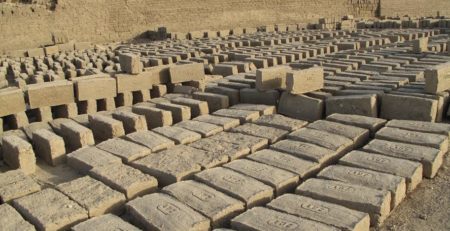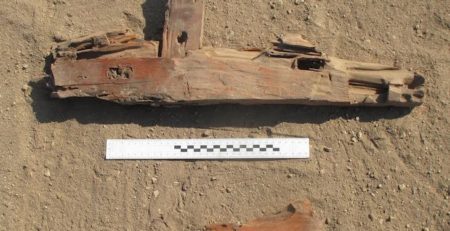Back to Ballas

From January 11 to January 24, 2017, the Ancient Egyptian Heritage and Archaeology Fund conducted our first, short initial season of survey and recording at the Site of Deir el-Ballas. Our goals for this campaign were to figure out ways to protect and restore the structures remaining at the site and in particular to study the “South Palace,” which had been damaged by recent looting.
Our work would not have been possible without the generous support of Peter Borromeo. The research leading to these results has received funding from the Austrian Science Fund (FWF) Project P25945. Special thanks also to Dr. Manfred Bietak for his encouragement and interest.
The “South Palace” had suffered from looters emptying out some of the casemate foundations and digging holes in the façade of the eastern wall of the platform, which has caused significant parts of the brick facing to collapse. To record the current condition of the structure, Piet Collet, from our team, photographed and surveyed it. In addition, we planned and photographed a number of exposed sections of casemates and casemate fill to better understand the construction and design of the original structure, which was not a residence but probably some type of watchtower. We also endeavored to clean up modern trash and debris littering the area. Piet Collet also surveyed the entire ancient site, and we conducted a walking survey to assess its condition.

The survey revealed that the areas of the Workmen’s Village and its associated chapels appear to have been largely destroyed. Fortunately, much of the other parts of the settlement have so far been preserved under the stacks of hay used by the village potters — for the time being. These will need to be mapped and cleared and recorded in future seasons before they, too are eradicated by traffic and construction.
The North Palace is being encroached upon by the spread of the modern town and cemeteries, so it is critical to find a way to protect and restore this important structure, one of the few intact palaces to survive from ancient Egypt. As part of the program this season, the area around the North Palace was surveyed to plan for a protective wall to be built around the structure in coming seasons.
We look forward to collaborating with the Antiquities Inspectorate in Qena and the Ministry of Antiquities to find additional ways to protect and preserve this important site. We would like to thank Dr. Khaled El-Enany, Minister of Antiquities and Heritage, Mahmoud Afifi, Director of the Antiquities Department, Dr. Mohamed Ismail Khaled, Supervisor of the Permanent Committee of the Antiquities Department, Madame Manal Ahmed Mostafa, General Director for the Egyptian Committee, Mohamed Mahmoud Hamed, General Director of Qena, Iyman Hindy, Director General of Qena Antiquities, Maryanne Danielle, Director of West Bank Antiquities of Qena, and our Inspector, Abdullah Moshamed Abdullah. We would also like to thank Dr. Salima Ikram, Mr. Magdy Aly and the American University in Cairo for their help and support and to Dr. Sergej Ivanov and Natasha Kharlamova for their kind and generous hospitality.
Our team this year consisted of Peter Lacovara as Director along with Piet Collet, as surveyor and Tom Hardwick and Victoria Jensen, archaeologists. The work was greatly facilitated by the ever resourceful, Hassan Mohamed Ali. We want to thank all the supporters of the Fund for making this important work possible.











